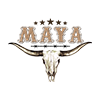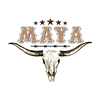DTF Transfers for Branded Packaging & Unboxing: Boost Conversions for Custom Apparel with UV DTF, Blank T‑Shirts, Hoodies, Hats, Embroidery & Dropshipping
If you run a small apparel brand, Etsy shop, or Shopify store, you already know that product quality matters — but presentation sells. Using DTF transfers and UV DTF printing to brand both the garment and the packaging can substantially increase perceived value, social shares, and conversion rates. This long-form guide walks through the technical fundamentals, creative packaging ideas, fulfillment strategies including dropshipping and print-on-demand, and practical how-tos to help you scale your custom apparel business in 2025.
What you’ll learn in this guide
- How DTF and UV DTF work and when to use them
- Comparisons: DTF vs screen printing vs DTG vs embroidery
- Design, file prep, and quality-control best practices
- Packaging and unboxing tactics that boost conversions
- Fulfillment options: same-day pickup, nationwide shipping, dropshipping
- Metrics, testing ideas, and a launch checklist
Understanding DTF transfers and UV DTF
Direct-to-film (DTF) transfers are printed onto a PET film using pigment inks, dusted with adhesive powder, cured, then heat-pressed to the garment. DTF is versatile across fabric types and performs well on dark colors because you can add an opaque white base.
UV DTF refers to workflows that use UV-curable inks or coatings during printing or finishing. The UV process enhances color vibrancy, surface durability, and can produce a glossier finish that pops in photography — useful for packaging inserts and small runs where visual impact matters.
Why choose DTF or UV DTF for branded packaging and apparel?
- Full-color capability: gradients, photos, and small text reproduce cleanly.
- Flexible substrate compatibility: works well on cotton, blends, polyester, and even some accessory materials used in packaging.
- Low minimums: ideal for test runs, limited drops, and seasonal collections.
- Durability: properly applied DTF is wash-resistant and long-lasting.
DTF vs other decoration methods
Picking the right decoration method impacts cost per unit, perceived quality, and the type of designs you can offer. Here's a practical comparison.
- DTF transfers: Best for full-color, small-to-medium runs, mixed fabrics, and on-demand production. Good balance of cost, speed, and design flexibility.
- UV DTF: Adds durability and vibrancy, especially effective for packaging elements and printed inserts that need a visual 'pop'.
- Screen printing: Most cost-effective at large volumes for limited-color art. Soft hand feel but not ideal for photo-realistic work on short runs.
- DTG (direct-to-garment): Excellent for detailed prints on 100% cotton and medium runs. Less flexible across blends and not as efficient for dark fabrics without pretreatment.
- Embroidery: Premium and durable for logos and accents on hats, polos, and jackets. Limited for photo-style designs and can raise cost per unit.
Smart brands combine techniques: DTF for standout chest prints and graphic panels, embroidery for premium logos, and UV-printed packaging inserts to create a cohesive unboxing experience.
Design and file-prep best practices
Good design and correct file setup reduce waste, speed approvals, and ensure accurate color reproduction. Follow these practical steps:
- Work at 300 DPI or higher for raster files; provide vector art when possible for sharp lines.
- Use sRGB color profile for accurate web-to-print matching; request print proofs to check color.
- Include a white underbase for prints that will go on dark garments; label layers clearly for the printer.
- Convert fonts to outlines and flatten layers to avoid missing elements at print time.
- Design with bleed for packaging prints and ensure important elements are within safe margins.
File types and naming
- Preferred formats: high-resolution PNG (transparent background), TIFF, or PDF for vector work.
- Name files clearly: SKU_design_revision_colorway (e.g., TEE001_Sunrise_v2_Black.png).
Quality control and wash testing
Before you push a design live, run samples and wash tests. A simple QC workflow can reduce returns and increase brand reputation.
- Order physical samples for each colorway and fabric choice.
- Run wash tests: at least 5 cycles with typical home-laundry settings; document any fading, cracking, or peeling.
- Record heat-press settings used for transfer application and include them in internal SOPs.
- Inspect edge adhesion and opacity of white base on dark garments.
Packaging & unboxing: turning orders into marketing moments
The unboxing sequence should be planned like a micro-campaign. A consistent, branded experience increases social shares, improves perceived value, and often lifts average order value (AOV).
Elements that make an unboxing memorable
- Branded outer mailer or box with a minimal design to create anticipation.
- Branded tissue paper printed with a repeat logo or artwork using DTF transfers or UV DTF on specialty paper.
- Sticker seals, care cards, and thank-you notes with DTF-printed artwork that include social prompts and discount codes.
- Small freebies or sample swatches with a printed note encouraging UGC (user-generated content).
Example unboxing flow: branded mailer → logoed tissue paper → garment with printed neck label or small DTF tag → care card with discount code and hashtag — each step reinforcing brand recognition.
Cost considerations and unit economics
Pricing depends on factors like print complexity, garment blank cost, order quantity, and whether you use dropshipping or hold inventory. General considerations:
- DTF setup costs are low, which favors small runs and frequent design drops.
- Screen printing has higher setup but lower per-unit costs at scale.
- Embroidery adds per-unit labor and cost but supports premium pricing.
To maintain healthy margins, factor in blank garment cost (blank t-shirts vs premium tri-blends), transfer cost, packaging materials, labor, shipping, and returns. Use a SKU-level P&L to track profitability and test price elasticity with limited drops.
Fulfillment strategies: print-on-demand, dropshipping, and local pickup
For entrepreneurs, fulfillment strategy influences cash flow and scalability.
- Print-on-demand (POD): Low inventory risk, ideal for testing designs. Integrates with Shopify/Etsy to fulfill orders as they come in.
- Dropshipping fulfillment: The supplier prints and ships directly to your customer. Great for hands-off scaling; choose a partner with reliable SLAs and branding controls.
- Local same-day pickup: Useful for local events, pop-ups, and rush orders. MAYA TX offers same-day pickup in Austin for sellers who need speed.
MAYA TX supports all three: POD workflows, nationwide shipping, dropshipping fulfillment where we print and ship under your brand, and same-day pickup in Austin. Learn more on our DTF Transfers, UV DTF, and Blank Apparel pages.
Marketing your branded unboxing
Use these tactics to amplify unboxing content and drive conversions:
- Encourage customers to tag your brand and use a branded hashtag in exchange for a discount on their next purchase.
- Run Instagram and TikTok unboxing ads featuring micro-influencers; show the packaging sequence and reveal the product.
- Include a loyalty code on printed care cards to drive repeat purchases and track effectiveness.
Resources from Printful, the Shopify Blog, and Oberlo provide useful tactics for integrating POD and dropshipping into wider marketing plans.
KPIs and testing plan
Measure what matters to iterate effectively:
- Conversion rate on product pages and post-launch.
- Average order value (AOV) and attach rate for add-on items like stickers or care cards.
- Repeat purchase rate (3–6 month window) to measure brand loyalty.
- Customer Lifetime Value (CLTV) and return rate for quality issues.
- Social UGC volume and engagement on unboxing posts.
Practical checklist to launch a branded drop (DTF + packaging)
- Pick 3 core SKUs: blank t-shirt, hoodie, hat. Choose fabric weights and fits that match your brand.
- Design artwork for garment and packaging; create a simplified pack design for tissue/stickers and a detailed design for the main print.
- Prepare print-ready files: 300 DPI, flattened, labeled, with white underbase where necessary.
- Order production samples with UV DTF for packaging proofs and DTF transfers for garments; perform wash tests.
- Create product pages with unboxing photos and short video clips showing the packaging experience.
- Set up fulfillment: POD/dropship integration or arrange same-day pickup if local (Austin sellers can use MAYA TX same-day pickup).
- Launch a social-first promo: influencer unboxings, timed discount codes, and a small ad spend to seed UGC.
FAQs and troubleshooting
Will DTF crack after many washes?
Properly applied DTF that’s cured and pressed to recommended settings holds up well. Always include washing instructions and run small-scale wash tests before large launches.
Can DTF go on hats?
Yes, flat-panel hats accept DTF well. For structured caps and curved panels, embroidery often gives a better long-term look and durability.
How fast can I launch a drop?
With POD and a supplier like MAYA TX handling fulfillment, you can launch within a few days after approving samples. Same-day pickup in Austin accelerates local launches.
Sustainability and material choices
Consumers increasingly care about sustainability. Consider these options:
- Choose organic or recycled blanks where possible and list materials on product pages.
- Use minimal recycled mailers and recyclable tissue paper with DTF-printed logos.
- Offer repair or returns policies that favor longevity over disposable fashion.
Final thoughts and next steps
DTF and UV DTF provide a powerful combination of visual fidelity, low minimums, and flexibility that make them ideal for modern apparel brands focused on branded packaging and unforgettable unboxing experiences. Pair DTF with selective embroidery, the right blanks, and a fulfillment partner that supports POD and dropshipping to scale smartly.
Call to action
Ready to transform your unboxing experience and boost conversions? Order DTF transfers, explore UV DTF for high-impact prints, and shop our wide selection of blank t-shirts, hoodies, and hats. Use MAYA TX for same-day pickup in Austin, nationwide shipping, and reliable dropshipping fulfillment — we print and ship for your customers so you can focus on growth.
Get started: Order DTF transfers • Explore UV DTF • Shop blank apparel • Contact MAYA TX for dropshipping
If you want a tailored plan — including SKU recommendations, mockup packages, and fulfillment pricing — reach out to MAYA TX and we’ll help you create a launch-ready, high-converting unboxing experience.


















